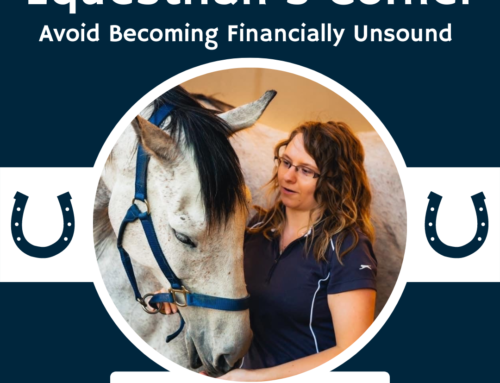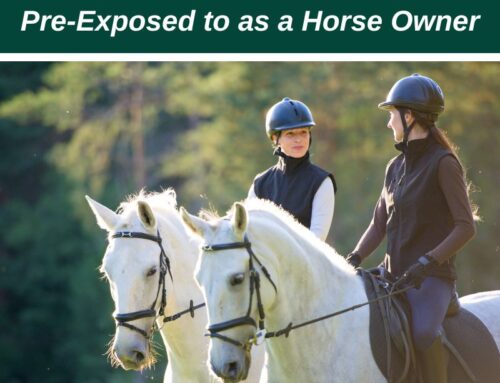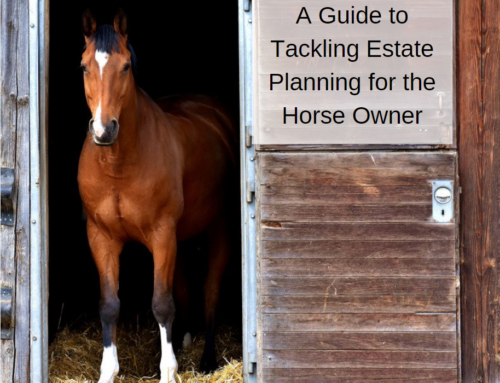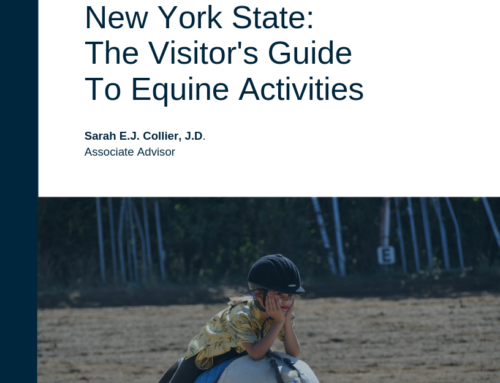Passed in 2017, The Safety in Agriculture Tourism Act (“The Act”) affects the liability of agritourism business owners-operators and the visitors to these destinations, including those that offer indoor and outdoor equine activities. The Act limits the owner-operator’s liability provided they comply with the duties and responsibilities imposed on them.
How does The Act limit my liability? The Act explicitly states the owner-operator of agritourism activities “shall not be liable for an injury to or death of a visitor” provided they comply with The Act. However, The Act does not remove all liability and provides vague guidance on how to comply with The Act.
What duties and responsibilities do I have? The Act enumerates a series of duties and responsibilities with which the owners-operators must comply. Some of these duties include the following:
1. Post and maintain way-finding signs to specify areas that are open to the public;
2. Adequately train employees actively engaged in agritourism activities;
3. Post at every point of commercial transaction (on or off sight) conspicuous “Warning to Visitors” notices including those risks inherent to agriculture and equine activities hosted at the facility;
4. Provide written information containing required texts and graphics provided by NYS Department of Agriculture and Markets;
5. Take reasonable care to prevent reasonably foreseeable risks to visitors and keep property reasonably safe for intended and foreseeable uses;
6. Post at point of sale/distribution of the tickets a conspicuous notice to visitors about their duties and responsibilities; and
7. Post visitor’s right to a full refund for intact and unused tickets/services if they are unwilling to participate because they are unprepared, do not consent to the risks inherent to the agritourism activity, or do not consent to the visitor’s duties and responsibilities.
How do I meet my duties and responsibilities? The Act provides no guidance on how these duties and responsibilities apply to equine activities. Until this is clarified in case law or further legislation, owners-operators should implement best business and safety practices. Below are four examples of practices of which owners-operators should be aware:
First, owners-operators providing equine activities should create visitor’s Rules of Conduct that are specific to those equine activities offered. The Act permits owners-operators to create their own Rules of Conduct to supplement the duties and responsibilities that visitors own under The Act. The purpose of creating Rules of Conduct for equine activities is to highlight certain behaviors that are expected at the facility when around horses to provide a safe and fun environment. Suggested rules include “no running or other fast movements around horses” and “no dogs permitted on the property.”
Second, signs should be tailored specifically to your business. There are a lot of boilerplate signs, manuals, and liability waivers available, but these generic materials might not be enough to provide a sufficient warning to visitors as required under The Act. For example, trail riding exposes the participant to different risks than riding in an indoor arena. Therefore, the content of these documents should be tailored to the specific equine activities being offered to fully inform visitors.
Third, create a “risk assessment” of the facility and all agritourism activities offered. The Department of Agriculture and Markets (“Agriculture and Markets”) advises owners-operators of businesses offering these activities to conduct a “risk assessment” with their insurance, legal and other professionals with experience in equine law and liability. The purpose of the “risk assessment” is to identify those risks inherent to visiting the facility and risks associated with the agritourism activities offered. The list of inherent risks generated are to be included on the “Warning to Visitors” signs. Manuals and liability waivers should be utilized to further explain these risks as well as safety procedures to mitigate injury.
Fourth, mitigate slips and falls on paths, riding arenas and other areas open to the public and post caution signs when appropriate. With the dramatic change in weather that New York can experience, horse owners know all too well about ensuring there is proper footing for equine activities. However, someone less familiar with agriculture activities and working with horses may be unfamiliar. Therefore, it’s important for owners-operators to take extra precautions such as marking unsafe footing with cones and putting down straw or shavings when it is safe to do so.
Keep in mind that this is not an exhaustive list of actions owners-operators can take to ensure that their business is both fun and safe for visitors. For further information on best business and safety practices to ensure the equine activities are both fun and safe, please visit: www.jgua.com/schuylerequineconference







